the death of cinema & how to bring it back to life (part 2)
Your brain has been rewired to hate movie theaters, and it's not your fault.
Welcome back to our 3-part series “the death of cinema & how to bring it back to life”, darlings. Two weeks ago, I sliced open the bloated corpse of theatrical exhibition and pulled out all the systemic stuff – business models, distribution windows, marketing strategies gone wrong.
If you missed Part I, catch up here.
But system failures only tell half the story. They explain the mechanics of how theaters lost us, not why we walked away so willingly. We've been conditioned to blame technology, attention spans, or the pandemic, but something much more fundamental has shifted.
Today we're exploring what I call experience devaluation – how we came to believe that individual convenience trumps collective experience.
I once spent a whole summer getting one of those online psychology degrees and, as you’d expect, I didn’t learn much BUT if there's one thing I did learn, it's this: humans are weirder and more complicated than any business model gives them credit for.
While cinemas obsess over technical specs and streaming windows, they're missing the tortuous battle for how our brains and identities have transformed. We’re not going to find the answer on how to save cinemas in screen size.
The answer lies in who we’ve become, how we now pay attention, and what we emotionally need from film in 2025 and beyond.
THE DEATH OF ‘GOING TO THE CINEMAS IS COOL’
Cinema has undergone a total identity collapse. What was once the coolest way to spend your night has somehow morphed into something akin to visiting a museum: respected, occasionally rewarding, but intrinsically divorced from the cultural heartbeat.
Movie theaters used to be cool, not in some nebulous, academic sense, but in the way everyone instinctively understands cool: they were where hot people went to make out in the back row, where cultural moments were born, where belonging happened in darkness with strangers. Now the average moviegoer pushes middle age while streaming skews younger. A24 became the new Miramax which became the new United Artists which became the new Studio System. Different packaging, same desperate attempt to make people care about sitting in a dark room with strangers.
Social identity shifted completely underneath cinema's feet. In 1995, being the person who'd seen every new release was a personality trait that worked. It meant you had your finger on the cultural pulse. In 2025, describing yourself as "a cinema person" feels nostalgic, like saying you're "into vinyl" or "really into vintage motorcycles". It's a personality based on loving something from the past.
The psychology behind this shift runs deeper than tech disruption. From a symbolic interactionist perspective, the meaning people assign to "going to the movies" shapes their behavior. Ask a Boomer about movies, they'll launch into a 40-minute soliloquy about waiting in line for Star Wars like it was their generation's Woodstock. Ask a Gen Xer, they'll wax poetic about teenage mall hangouts and video store browsing. Ask anyone under 30 about "movie culture," and they'll show you a TikTok of some guy summarizing the entire plot in 60 seconds while doing a dance.
For many young people today, these symbols have been stripped of meaning. The theater represents nothing more than an expensive, inconvenient venue for content they could access elsewhere while wearing their comfort pants and actually being able to pause when they need to pee. The social aspect that once made cinema a teenage hotspot has migrated to Discord servers and Fortnite lobbies – because why spend $18 to awkwardly hold hands with your crush in the dark when you can flirt through emotes for free?
When the primary cultural interaction with films happens through reaction videos and memes rather than direct viewing, cinema has essentially lost control of its own meaning-making apparatus. Young people aren't avoiding movies. They've been conditioned to process them differently, treating actual viewing as optional homework after they've already participated in the “discourse”. You no longer have to sit through three hours of something when a 60-second TikTok gives you all the cultural currency you need for Monday's conversations. The films themselves have become the appendix of film culture. Technically still there but serving no apparent purpose.
Nostalgia versus novelty plays out as another tension point. Theater chains install vibrating seats and spray water in your face while AMC runs Nicole Kidman ads about the sanctity of the cinematic temple. It’s confusing. Pick a lane. We are desperately trying to jazz up the experience with gimmicks – 4DX, ScreenX, meal service – while simultaneously marketing the timeless magic of the movies.
This tension creates a dissonant message about what cinema actually offers.
Hollywood's prestige strategy has all the subtlety of a sledgehammer through drywall. "Save cinema by watching Wes Anderson's precious dollhouse compositions exactly as God and the marketing department intended." Meanwhile, the actual movies people used to enjoy in theaters—romantic comedies, thrillers that don't involve superheroes, anything starring Sandra Bullock or Morgan Freeman —have been relegated to streaming purgatory. Studios now only accommodate two extremes: $300 million CGI destruction orgies or nostalgia transfusions in the form of reboots and sequels. Nothing in between survived the purge.
The more theaters position themselves as temples of cinema appreciation, the more they reinforce the perception keeping younger audiences away: that moviegoing is a serious, somewhat elitist activity rather than a fun night out.
THE DEATH OF ANTICIPATORY JOY
I still remember standing in line at Athens' Cine Danaos for a showing of Lanthimos' Dogtooth, back when he was just Greece's darling, not the toast of Hollywood. The queue stretched around the block like some kind of cinematic pilgrimage. Students in black turtlenecks clutching paperbacks. Critics pretending they hadn't already seen the screener. All of us vibrating with the same electricity that powers first dates and protest movements. We weren't waiting for a movie. We were part of a cultural moment that started weeks before with whispered recommendations and wouldn't end until 2 a.m. in smoky meze places.
That's what we've lost: movie excitement. The industry has hacked off the limbs of anticipation and left us with nothing but torsos to stream.
Movie excitement used to exist in three dimensions: the hunger before, the feast during, and the digestion after. Now it's just a notification sandwiched between TikTok and email. "New release now streaming."
Neuroscientists at Stanford have mapped the brain during anticipatory states, finding that dopamine levels often peak before an event, not during it. They call this "anticipatory joy"—a distinct neurological state that often delivers more sustained happiness than the anticipated thing itself. The industry built perfect pleasure delivery systems. Marketing cycles. Trailer releases. Poster reveals. Festival buzz. Opening weekends. The waiting was the point.
The 2023 Barbie/Oppenheimer double feature became a cultural phenomenon largely because the anticipation stretched across months. People planned outfits, coordinated viewings, pre-booked tickets. The experience began long before the projector started rolling. Compare that to Netflix's The Electric State, which costed $300 million, dropped on a random weekday, “trended” on the platform for approximately 36 hours, then disappeared into the content void forever.

This anticipatory dimension has been systematically dismantled by streaming's instant gratification model. When the next Martin Scorsese film appears on your Apple TV+ homepage with no warning on a random Wednesday, you will watch it, sure, but you'll never experience the joyful torture of marking release dates on calendars, dissecting trailers frame-by-frame, or debating theories with friends.
Behavioral economists call anticipation a psychological utility—happiness generated without additional consumption. It's pure profit for our emotional economies. The industry has traded this psychological gold for the copper coins of "content delivery metrics," like a restaurant throwing away dessert because it takes too long to prepare, ignoring that people will literally pay more for the meal if they know dessert is coming.
In killing the wait, we've killed the collective experience that made movies matter. We've reduced an art form built on shared anticipation to just another item on an endless algorithmic feeding tube: here today, forgotten tomorrow.
THE DEATH OF LIMITED CHOICES
There’s a very real reason my main offering to paid supporters of this newsletter is After Credits: a monthly roundup of a select few handpicked film & tv shows based on what you’re in the mood to watch.
When you have thousands of streaming options, the fear of making the "wrong" entertainment choice looms like a debt collector at your door. A $15 theater ticket only amplifies this dread. I know you spend twenty minutes debating whether you should make pasta or order Thai food, so expecting you to confidently choose between 10,000 streaming options is war on your brain.
Behavioral economists call this mess "choice overload”. Back in 2000, psychologists Sheena Iyengar and Mark Lepper found that consumers presented with 24 jam options were actually less likely to buy any jam than those shown only 6 options. In entertainment terms, this explains how we've built a world where more content has somehow created less satisfaction.
Herbert Simon coined this "bounded rationality”. Humans make decisions with cognitive limitations and incomplete information. Rather than finding the perfect choice, we "satisfice”, grab something that seems good enough given our fried mental circuits. When theatrical releases numbered in the dozens instead of the thousands, satisficing was easy.
Cinema once handled this problem beautifully. A multiplex offered 8-12 films; your decision-making ended when you bought your ticket. You couldn't suddenly switch to another movie halfway through if you got bored. Today, movie theaters exist within an infinite ocean of alternatives, fighting against content accessible without pants. This screws with the psychological math of leaving your house.
Add rising ticket prices, and the decision architecture heavily favors staying home. It's not that audiences actively choose streaming over theaters. No, the path of least resistance just leads directly to your ass print on the couch. From a psychological standpoint, theaters compete against not just streaming content but the entire mental load of decision-making in an attention-flooded wasteland.
Our brains are wired for status quo bias—defaulting to existing conditions rather than making active changes. Once the home viewing habit calcifies, the psychological inertia required to break it becomes another barrier theaters must overcome.
This explains why blockbuster franchises still perform well. They reduce the cognitive burden. If you already know what Doctor Strange and America Chavez are up to, you've eliminated the risk assessment portion of your evening. The familiar requires less mental energy than the new, and our brains are desperate for anything that requires less work.
I used to explain this to studio sales executives when they'd insist on including five different streaming brand logos in digital download ads: People don't want a lot of choices. They want to feel more confident in the choices they're making.
And cinemas (with notable exceptions that many of you outlined in Part I) have failed to instil confidence across the board.
THE DEATH OF FLOW STATES
I had this moment during Nickel Boys—the theater, my body, my anxieties, all of it dissolved. I was completely absorbed, feeling nothing but the story unfolding in front of me. Then some dipshit's phone screen lit up like a supernova, and reality crashed back in. That hour of complete immersion? Psychologists call it a "flow state." I call it increasingly endangered.
Movie theaters used to be flow factories, cranking out collective transcendence in the dark. Now they're just expensive rooms where we fight our phone addictions while pretending to watch a movie.
Our brains have been hijacked. Those tiny dopamine hits from notifications and scrolling have physically rewired our neural pathways. The average person now checks their phone 96 times daily, once every ten minutes. Our attention spans have been pulverized into dust. Sustained focus feels like trying to meditate in a tornado.
When psychologist Mihaly Csikszentmihalyi (I absolutely had to Google that spelling) identified flow states back in the 70s, he called them the secret to happiness. Those rare moments when challenge and skill align perfectly, self-consciousness evaporates, and time warps.
Streaming platforms can't replicate these flow states and their executives know it. Even when millions watch the same show, the experience remains fractured across different times, environments, and attention levels. Netflix isn't selling transcendence; they're selling Alka-Seltzer-in-hot-water convenience.
The high from two uninterrupted hours of storytelling can't happen when you're simultaneously scrolling TikTok, answering texts, and Googling "is that the guy from Succession?". Studies show almost over half of us reach for our phones to search for movie trivia within 20 minutes of pressing play.
Even more troubling than our collective addiction is the perverse pride that's developed around it. I've watched friends post Instagram stories showing half a movie screen with captions like "watching Twisters but also planning my entire wedding" as if it's cute. There's an almost competitive quality to it: Who can pay the least attention while still claiming they've "seen" the film?
The shame that once came with checking your phone in a theater has transformed into a badge of honor, a signal that you're too busy, too important, too perpetually connected to fully surrender to a story.
This is part of a broader celebration of intellectual shallowness posing as efficiency, where deep engagement with anything is seen as a luxury or, worse, a character flaw. "I can't focus on movies anymore" isn't delivered as a confession but as a relatable personality trait, met with knowing nods instead of concern.
 Tiktok failed to load.
Tiktok failed to load.Enable 3rd party cookies or use another browser
Theater owners keep investing in bigger screens and fancier sound systems while completely missing what made theaters special in the first place. Instead of protecting the flow state, their single most valuable offering, they've surrendered to distraction culture by installing phone chargers and allowing mid-movie food ordering.
The saddest part is that we all still desperately crave these flow experiences. The fulfillment from deep immersion hits different than the scattered pleasures of digital distraction. People haven't stopped wanting to lose themselves in stories; they've just lost the neurological equipment to achieve it without help.
Cinema should be extending that help. Instead, it's just supersizing the cup holders.
THE DEATH OF CLASS REPRESENTATION
Cinema has always played both mirror and window, reflecting our reality while opening views into new worlds. But that balance has tipped dramatically, creating an empathy drought where films increasingly show us billionaires, wealthy suburbanites, and upper-class professionals while working people have vanished like they've been Thanos-snapped from the frame.
When most films focus on the middle-class and the ultra wealthy (can someone please shoot the pseudo "eat the rich" genre and bury it in a grave? I'm begging), the gap between depicted and actual lives becomes a canyon. Audiences feel this disconnect in their bones even when they can't name it. This is perpetuated by the fact that class representation is at an all time low behind the screen as well, with the Creative Industries Policy and Evidence Centre finding that in the UK “just one in 12 people now working in film, TV and radio are from lower socioeconomic backgrounds”.
Media scholars call this "symbolic annihilation"—when your lived experience gets zero authentic representation on screen, the message is clear: your story doesn't exist. Doesn't matter. Isn't worth telling.
This connects directly to the content narrowing I mentioned earlier. As studios funnel everything into tentpole franchises chasing four-quadrant appeal, they've nuked the mid-budget films that historically showed diverse economic realities. The ambulant corpse of working-class storytelling staggers forward, sustained by the occasional indie darling that somehow breaks through.
Comedies, romances, dramas, the genres that traditionally depicted working-class lives, have been exiled to streaming platforms, where they find audiences but lose cultural prestige. I challenge you: when was the last time you saw a theatrical comedy about a family struggling to make rent that wasn't poverty porn? A working-class romance without some supernatural twist? A workplace drama that didn't involve gorgeous people cosplaying as office drones?
This class blindness rips out cinema's historical heart as democratic entertainment. When theaters only showcase elite experiences while relegating working-class stories to the small screen, the message couldn't be louder: your life isn't big enough for the big screen.
I've just spent 5000+ words performing an autopsy and an excavation on theatrical cinema without offering a single solution. My editor (side note: this is also me) is probably hyperventilating into a paper bag right now.
But the resurrection plan deserves its own space, so Part III is coming in three weeks. If I’m being honest, it is the most difficult part to write.
If you work in film, forward this to the executives who need to hear it.
If you love movies, truly love them beyond the convenience of home viewing, pass this to the friend who once argued with you about Kubrick until sunrise, who hasn't set foot in a theater in months.
The people who designed the systems killing theatrical cinema won't fix what they've broken until the pressure becomes unbearable.
Your share might be the tipping point.
There's a particular power in seeing someone else articulate what you've felt but couldn't name. Use it.
In the meantime, I'm curious:
Which of these psychological barriers hits closest to home for you?
A final note for people with taste 🫦
While the internet's prioritizing hot takes and SEO-optimized nothingness, I’m here building a sanctuary for people who believe film and television criticism can be thoughtful, accessible and fun all at once.
For the price of a truly mediocre sandwich, consider joining the resistance with a paid subscription – it keeps independent film writing alive and the algorithms at bay.
Plus, you'll get exclusive access to After Credits, my monthly handpicked selection of films & tv shows that will stop you from doomscrolling Netflix AND exclusive access to my more personal posts.
Now go forth and raise those standards, darling.
- Sophie x



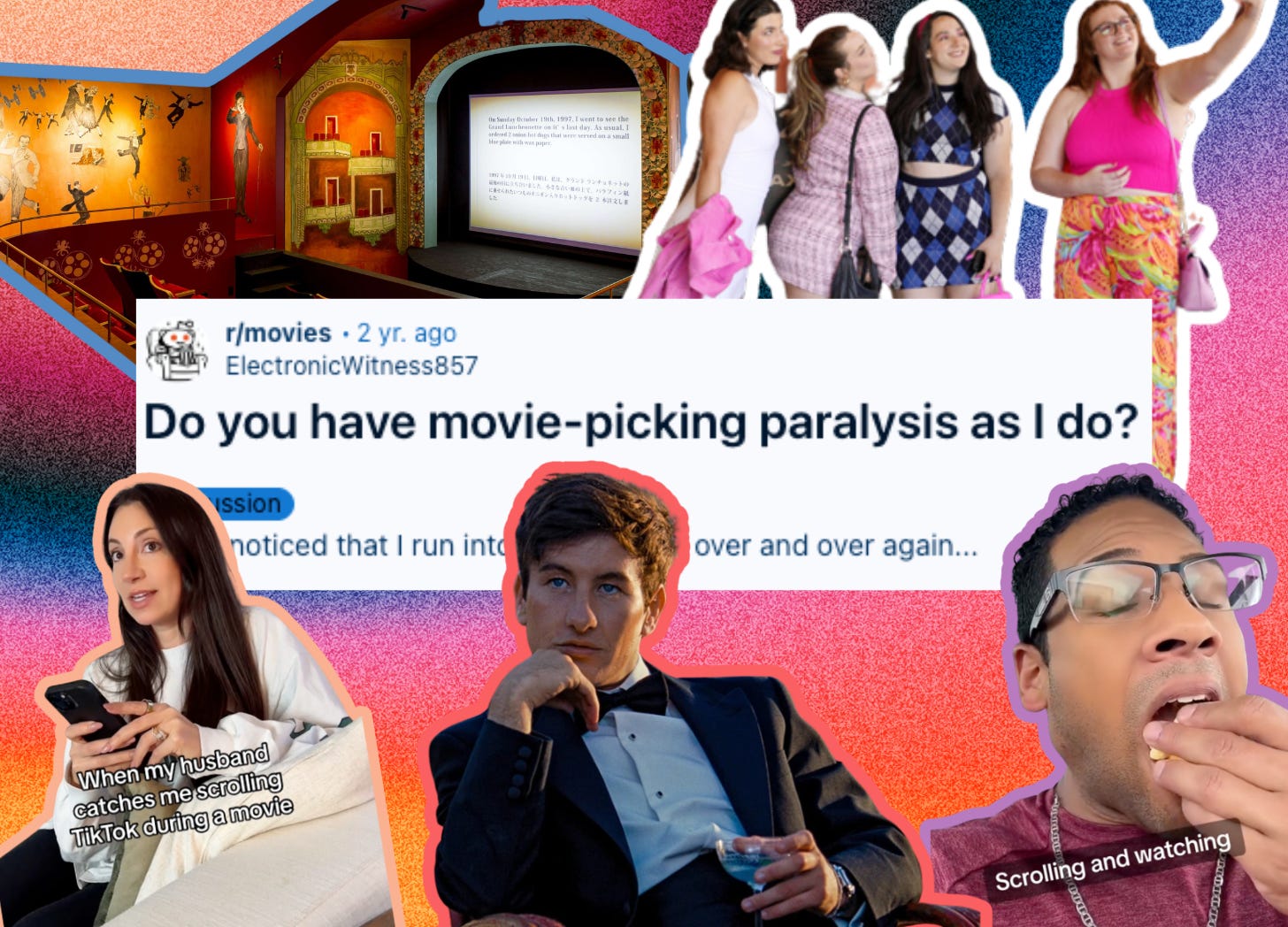
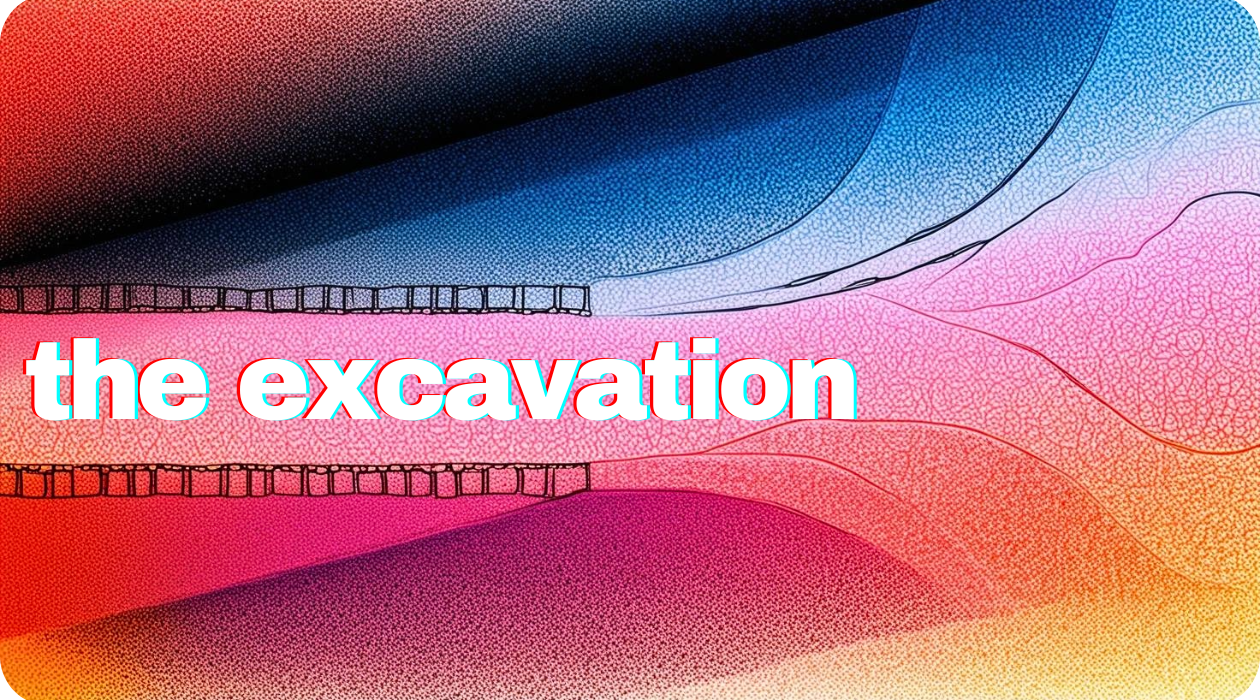
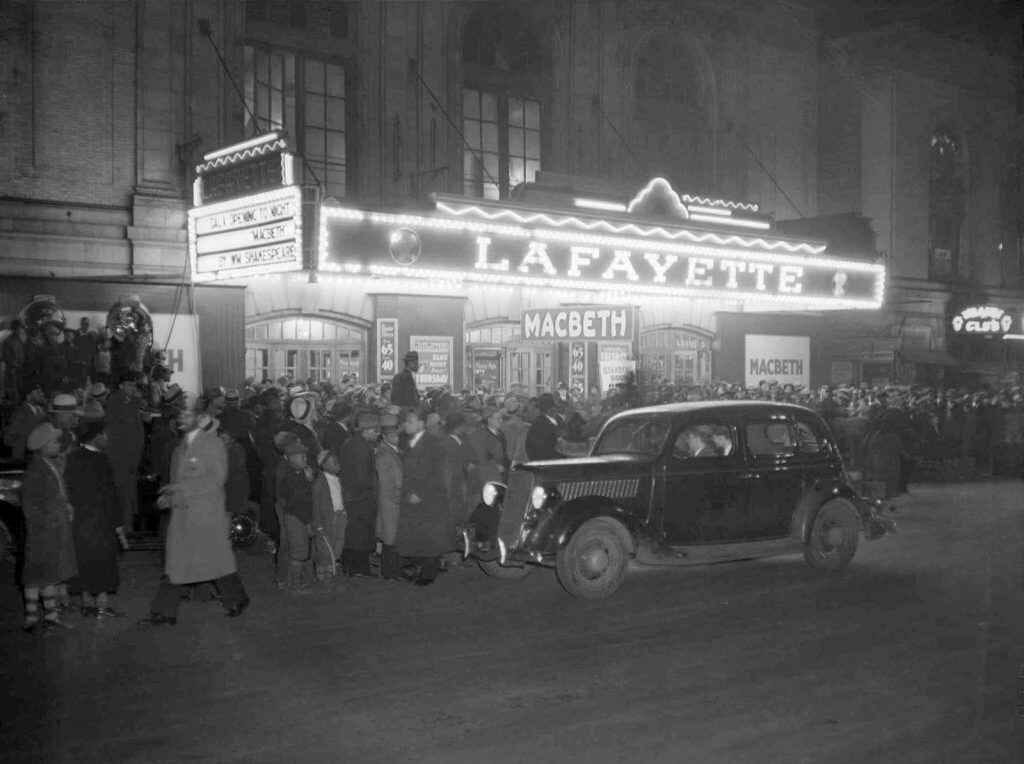
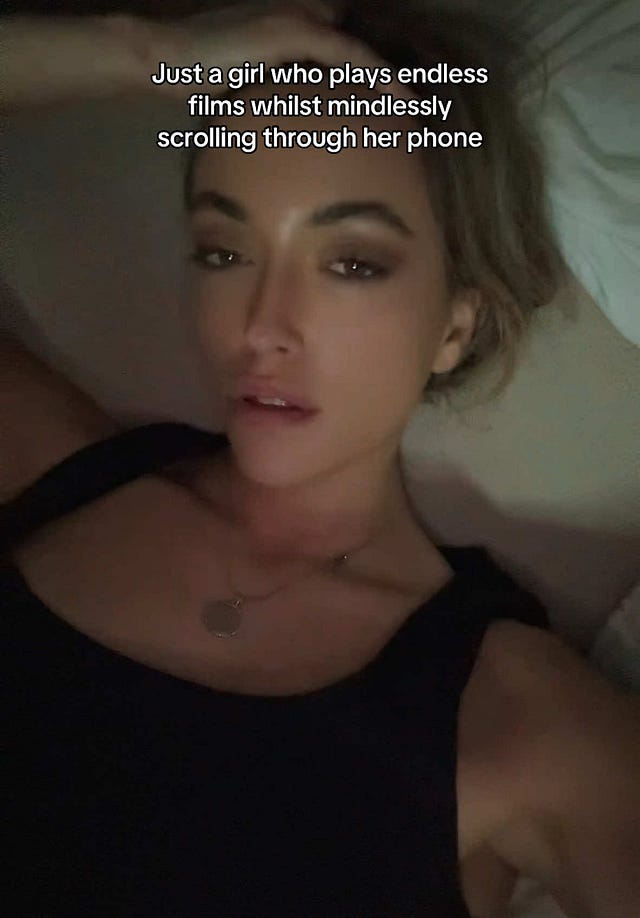
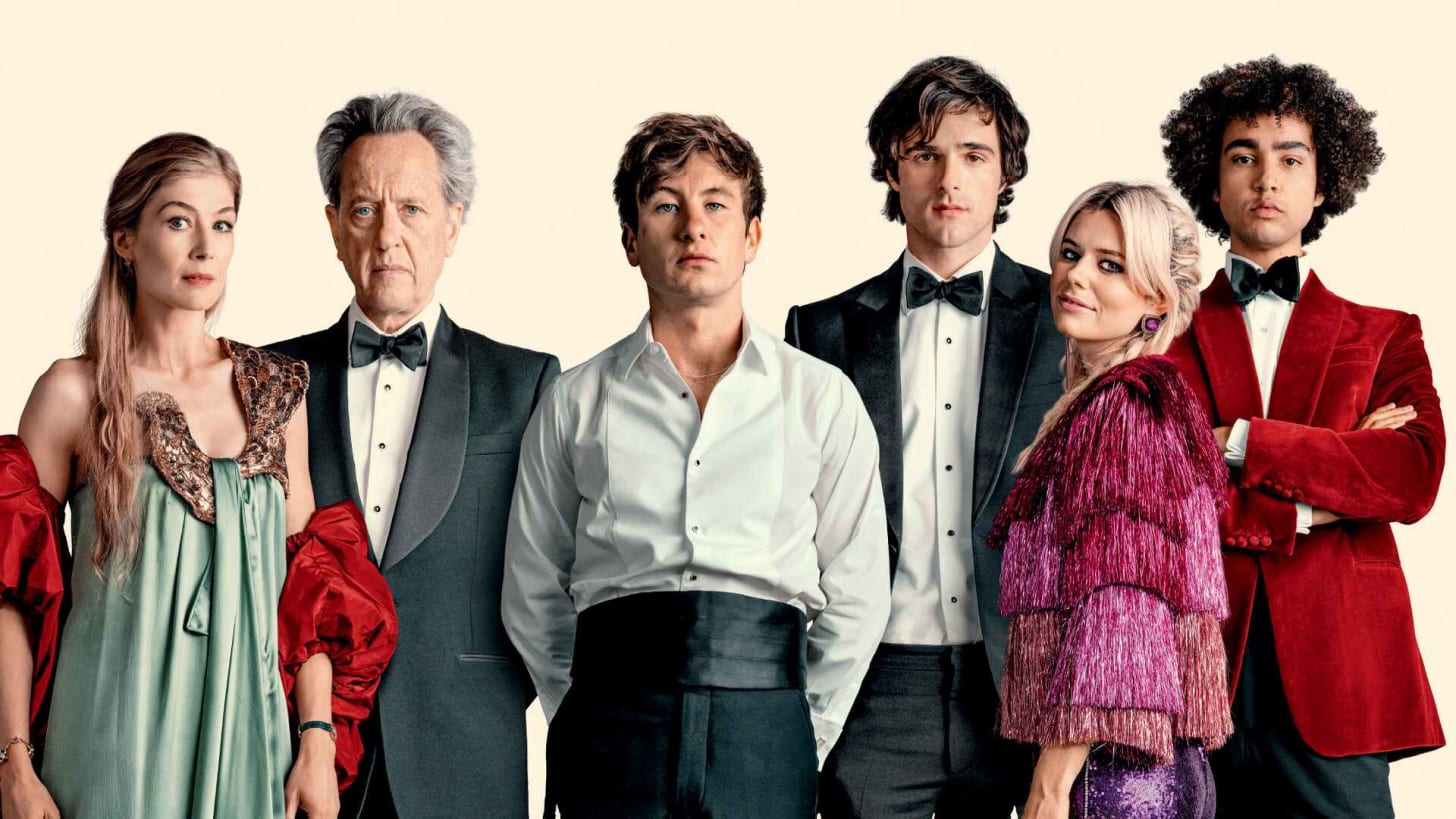
What has cinema, both the experience and the business, lost or neglected?
You nail it here with your five, Sophie (THANK YOU!): 1. A feeling of cool; 2. Anticipatory joy; 3. Pleasure of limited choices; 4. Fast path to flow state (aka immersion); 5. Class representation.
I'd extend it with:
6. Affordability;
7. The pleasure of the hang before & after -- theaters need to offer this space;
8. Enhancement of the film -- be it before or after, the theater should be the guide in the discussion and not surrender us to the internet;
9. Community: theaters should help you feel part of something bigger than yourself;
10. As the theater is a center of curator & should become something you trust in matters of taste, can't they bring us more that just movies -- but that which is still related to cinema & the culture?
11. A guarantee of perfect exhibition... they police the bathrooms often, letting you know they cleaned the stalls, but what about the sound, projection, lens, and aspect ratio? Why can't they tell us it is perfect. I still dug SINNERS on Tuesday but the left speaker had trouble with the bass and there was no where to register my complaint.
Cinema -- both the experience & the business -- can be saved. But it must be saved.
It's been rusting away for 40 years now.
Funny enough, the lack of moviegoers attending screenings mid-week is working to bring back some of the flow state. I often joke that my ideal movie-going experience is an empty theater these days because of many of the observations you make. I am so eager to read what you suggest in part 3. So far, you have captured so much of what I have observed in parts 1 and 2, but I am STUMPED to come up with a strategy to save the biz as we know (knew?) it and love it.